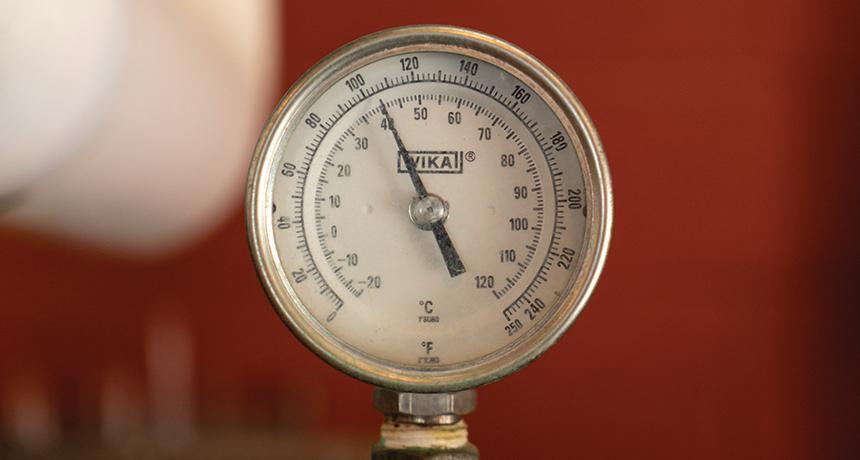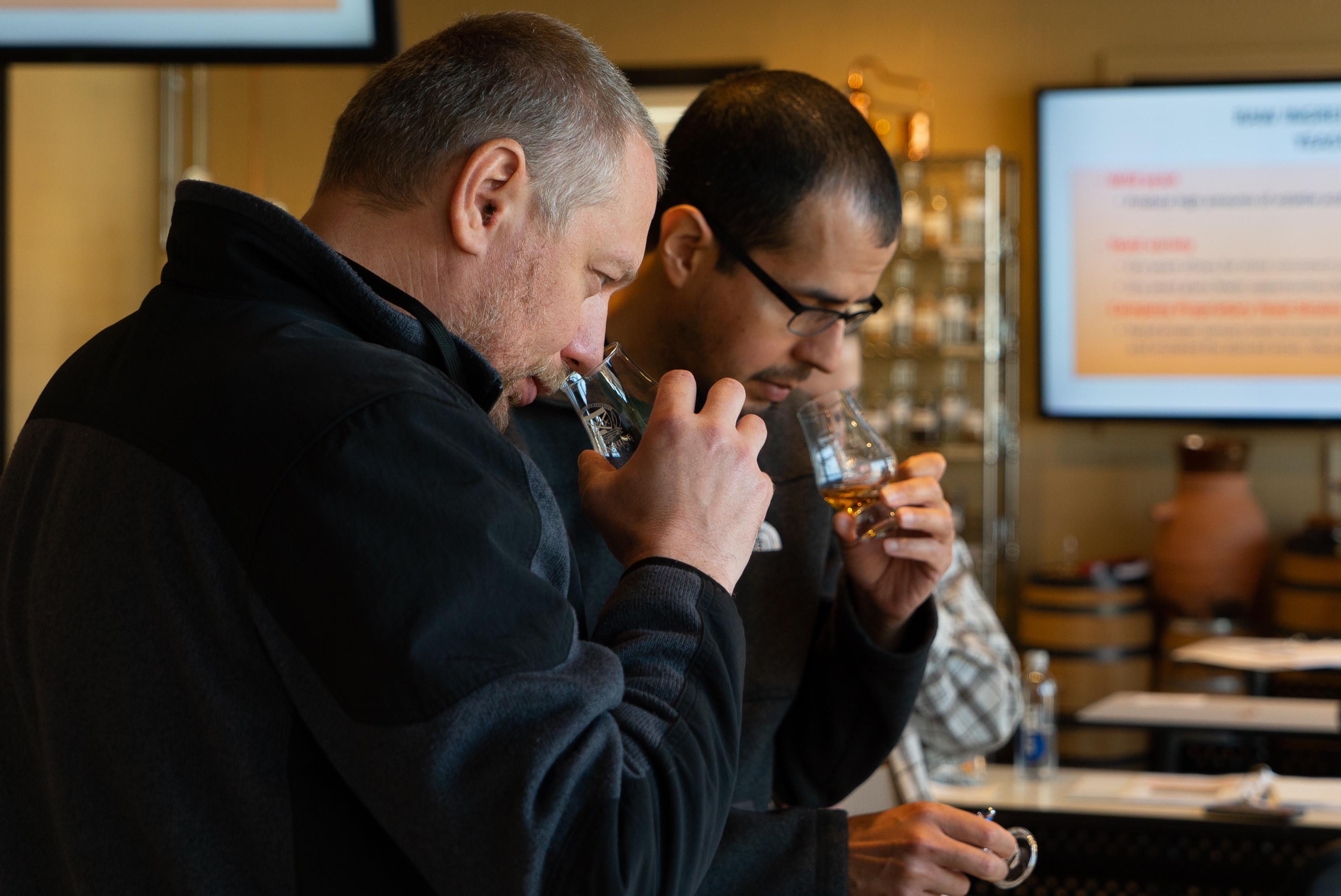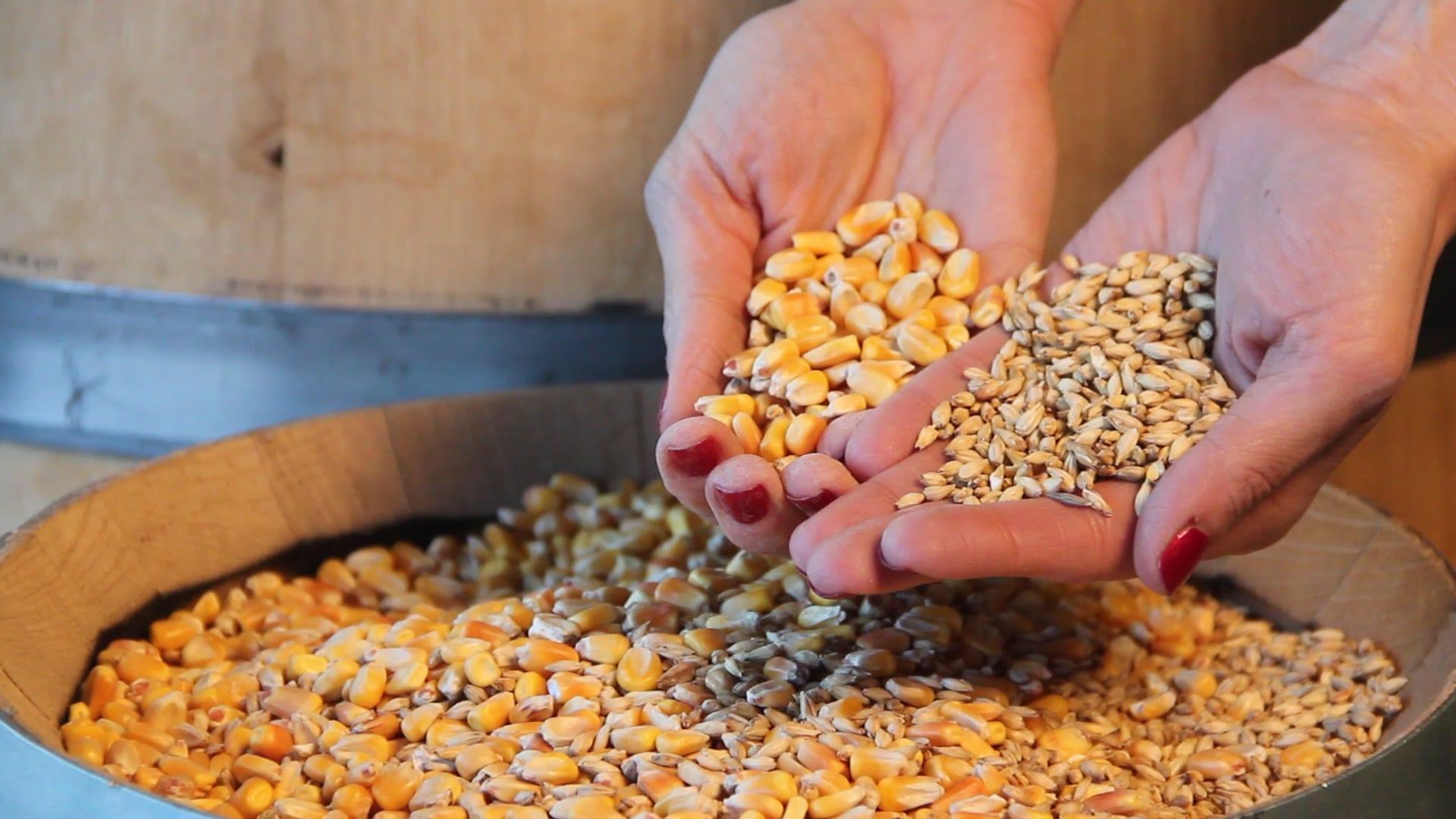
The Art of Non-Alcoholic Spirits
blog
For decades, spirits and cocktails have fostered a culture of craft, connection, and celebration. But over time, cocktail culture has evolved far beyond the buzz!

Written by Cliff Jacobson, CEO, Spray Chem; Business & Engineering, Burnt Barn Distilling Co.
The steam your boiler creates is the driving force behind your entire operation. It's what allows you to turn your raw materials into barrels of Bourbon.
Steam boilers only have one job-turning water into steam. This steam is then used to cook and add moisture to the mash while providing heat for your stills. Sounds simple: bring in the water, heat it up, turn it into steam, and replace the lost water with more water. But, if your boiler goes down, then you lose your ability to create your product and your business suffers.
Calcium, iron, magnesium, silica, or suspended solids from the feed water can build up inside the boiler. When this happens, the British Thermal Units or BTUs of energy that would otherwise be transferred to the water cannot get there. This results in less available steam, more energy required to heat the same volume of water and, ultimately, boiler failure. This can happen very rapidly, but there are ways to prevent potential problems. Proper set up, operation, and feed water treatment will keep your boiler functioning and your facility distilling.
Proper operation of your boiler is a challenging task that should not be taken lightly. Careful selection of boiler water chemistry, along with proper pre-treatment of feed water and regular testing and equipment maintenance, are each important for ensuring a safe and economical operation and extended life.
Let's go over some common questions and considerations you should be aware of when evaluating your boiler's health-and how to troubleshoot some common problems. (And if you'd like to go back to the basics first, visit this link).
Documentation of the temperature gauge in the exhaust stack will indicate if your boiler is working harder than it should.
When your boiler is new, run it on full load and take a baseline measurement. You should do this regularly whenever your boiler is under a load. If the temperature increases, scale has probably formed on the heated surfaces. Softening the feed water with ionic exchange is key in preventing scale. Even if your water is very soft, it will be cycled up many times in the boiler until it precipitates out of solution which will cause scale.
Well, this is a complicated question to answer, but let's start with the water source coming into the boiler room. Make sure you start with the basics of water quality and treatment, here.
Pre-boiler water softening and using a combination of a scale and corrosion inhibitor, oxygen scavenger, and steam line treatment will all need to be considered.
The chemicals would be fed directly into the feed water tank so the oxygen scavenger would have time to react with the oxygen in the feed water. If the feeds are separated, then the oxygen scavenger would be fed into the deaerator or feed water tank, and the scale and corrosion inhibitor would then be fed into the makeup line downstream of the feedwater tank. The steam line treatment would go into the steam header just past the boiler header shut off valve.
Typically, in a small low-pressure boiler, you will be using what is called a "one-drum treatment" where all three products are in one formula. In this case, your chemical addition would be into the makeup tank.
When the treated water is fed into the boiler, the boiler is fired up and heats the water until it begins to boil. As the water boils, it turns into steam. Steam takes up more room than water, and as more water is turned into steam, the boiler begins to compress the vapor and builds pressure. This backpressure keeps the water from becoming steam until it is heated to a higher temperature because the backpressure acts just like atmospheric pressure, pushing down on the water only harder. The higher temperature of steam stores more energy to be used for cooking and distilling.
When the steam leaves the boiler, most of the solids are left behind in the water. These solids will eventually become so concentrated that they will cause buildups in the boiler. This process is known as "cycles of concentration."
Basically, when the water side of a boiler is filled to its capacity of, say, 50 gallons, each time those 50 gallons are turned into steam and the steam leaves the boiler, all of the solids that were in those 50 gallons are left behind and the concentration of solids is increased.
What if we did this twenty times? There would be 50 gallons of water in the boiler with 20 times more solids in solution than were initially in the water. All boilers have a maximum cycle of concentration that they can tolerate before they carry over or start to develop scale.
To prevent this from happening, determine how many cycles the boiler can handle with proper water side treatment. Once you have established this, open the steam duty needle valve situated just below the low-level area of the boiler and bleed off enough highly cycled boiler water to maintain that level. This is called a "surface bleed off." Typically, this bleed off is a manual valve that is left open on smaller boilers.
Conductivity is a measurement of polar ions in solution. It is how to determine when to open or close off the surface bleed to maintain the proper level. We need to make sure we do not exceed that conductivity: draw a sample from the boiler water and cool it to ambient (room) temperature, then pour it into a hand-held conductivity meter to determine your cycles.
As the water cycles up in addition to the dissolved solids, suspended solids also become concentrated and must be blown out of the bottom of the boiler to prevent fouling. These "bottom blows" are typically done just prior to shutting the boiler down and while it is not under a load. If the boiler is running continuously, the bottom blows are done every 8 to 10 hours.
When we open the processing valves to use this steam, we want to make sure we do not exceed the rating of the boiler or we will encourage "carry over," even in a closed system. This is very critical, especially if you are using direct steam in your kettle.
When the boiler is under pressure, the water is at a much higher temperature than boiling water on your stove. Remember-the higher the backpressure, the harder it is to get water to become a vapor.
Imagine if you instantly reduced the pressure in the boiler back to atmospheric pressure: the water inside the boiler would immediately erupt into a chaotic turbulence. As the water turned to steam and tried to exit the boiler through the steam header, it will entrain (or carry with it) a large volume of boiler water.
This boiler water is loaded with highly caustic materials and solids that will contaminate your entire process and corrode soft metals, such as copper. Sometimes this can happen gradually so you may not even be aware of it until you discover corrosion or bad product.
You can test for carry over in two ways.
There are a variety of treatment options for boiler maintenance, but remember to consult an expert to figure out which is most appropriate for your system.
The most common treatment program for small, low-pressure boilers is a mixture of scale inhibitor (typically a phosphonate), an oxygen scavenger (typically a catalyzed sodium sulfite), and a steam line treatment (typically a neutralizing amine).
Water contains oxygen. Oxygen is very corrosive to the metals found in boilers and related equipment. Even a few parts per million (ppm) in a boiler can cause pitting corrosion that will destroy the equipment very quickly. Maintaining a residual of 30-40 ppm sulfite should protect against pitting corrosion in the boiler.
Phosphonates can be added to the boiler make up water. This prevents the small amounts of hardness minerals that slip past the softener from becoming scale in the boiler. The residual level is typically maintained at 10-15 ppm.
Carbonates normally found in alkaline water are volatile. Under normal operating conditions, the steam that leaves the boiler is very low in solids and can be quite corrosive to the steam section of your system. This is especially true at the point in which the steam is cooled back to the point of becoming a liquid again. Here, the carbonates present in the steam are converted to carbonic acid, further reducing the pH.
Amines carry over with the steam and neutralize the carbonic acid as it is formed preventing corrosion of the equipment and condensate return system. They are fed at a rate to maintain a pH of 7.5-8.5 in the condensate return coming back to the makeup tank.
Amines are approved by the Food and Drug Administration (FDA) when properly controlled. Please note that Organic-certification organizations do not allow these products to be used in steam where the steam contacts the product directly: care must be taken to ensure that all Amines are gone from the boiler before processing organically. Even if you are not processing under organic certification, you may still not want amines in your process. This last area of concern is one that requires some discussion.
Old school distillers use direct steam for kettles-even some of the big distillers still do. There are also a lot of distillers that have started out with direct steam, but eventually opted for jacketed kettles. Before you decide which way you want to go, here are some things to ponder:
It's this writer's opinion that the best way to go is with a jacketed kettle to ensure no foreign materials get added to the mash. Even if you opt not to use a steam line treatment, any boiler water upset that caused carryover could add unwanted chemicals into the process; further, a low pH in condensate creates iron and copper corrosion that is carried back to the make up water, which could deposit iron into the kettle. If you do choose the route of direct steam, use a clean steam heat exchanger to protect the rest of your equipment from corrosion.
If this still sounds too complicated to figure out on your own-no worries. Let the experts at Spray Chem help. Contact our team at contact@spraychem.com or (530) 895-3658.
Interested in advancing your knowledge of distilling and the spirits industry? Check out Moonshine University's upcoming courses to learn from the best in the business.
Written by Cliff Jacobson, CEO, Spray Chem; Business & Engineering, Burnt Barn Distilling Co.
Related Content
Understanding the Basics of Distillery Boiler Water Treatment
Finishing Your Spirit With Filtration: Plate & Frame Filter Press Or Lenticular Housing?

blog
For decades, spirits and cocktails have fostered a culture of craft, connection, and celebration. But over time, cocktail culture has evolved far beyond the buzz!

blog
Those that are familiar with the process of crafting distilled spirits may also be familiar with the 10 common congeners that are created during fermentation, and honed during the distillation run. Each congener has its own distinct personality, rendering unique tastes and aromas to the finished spirit.

blog
So, you want to start distilling with freshly milled grain. Maybe you're tired of paying top dollar for the pre-milled stuff from the malt distributor, and you're ready to invest in the quality, efficiency, and bulk pricing that comes with milling your own whole grain. But where do you start?